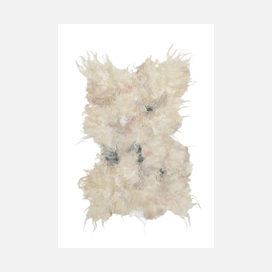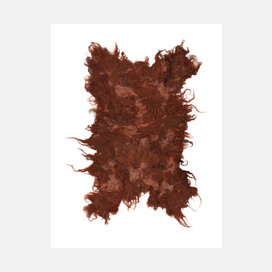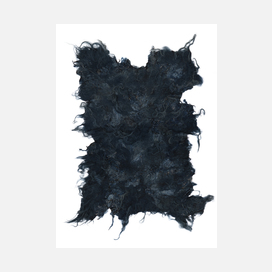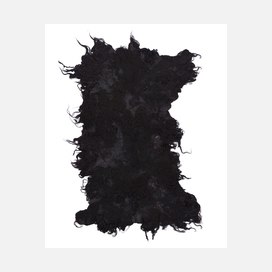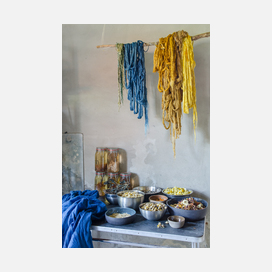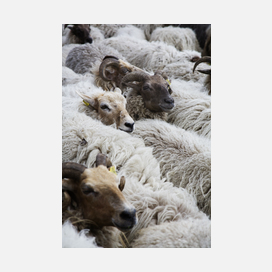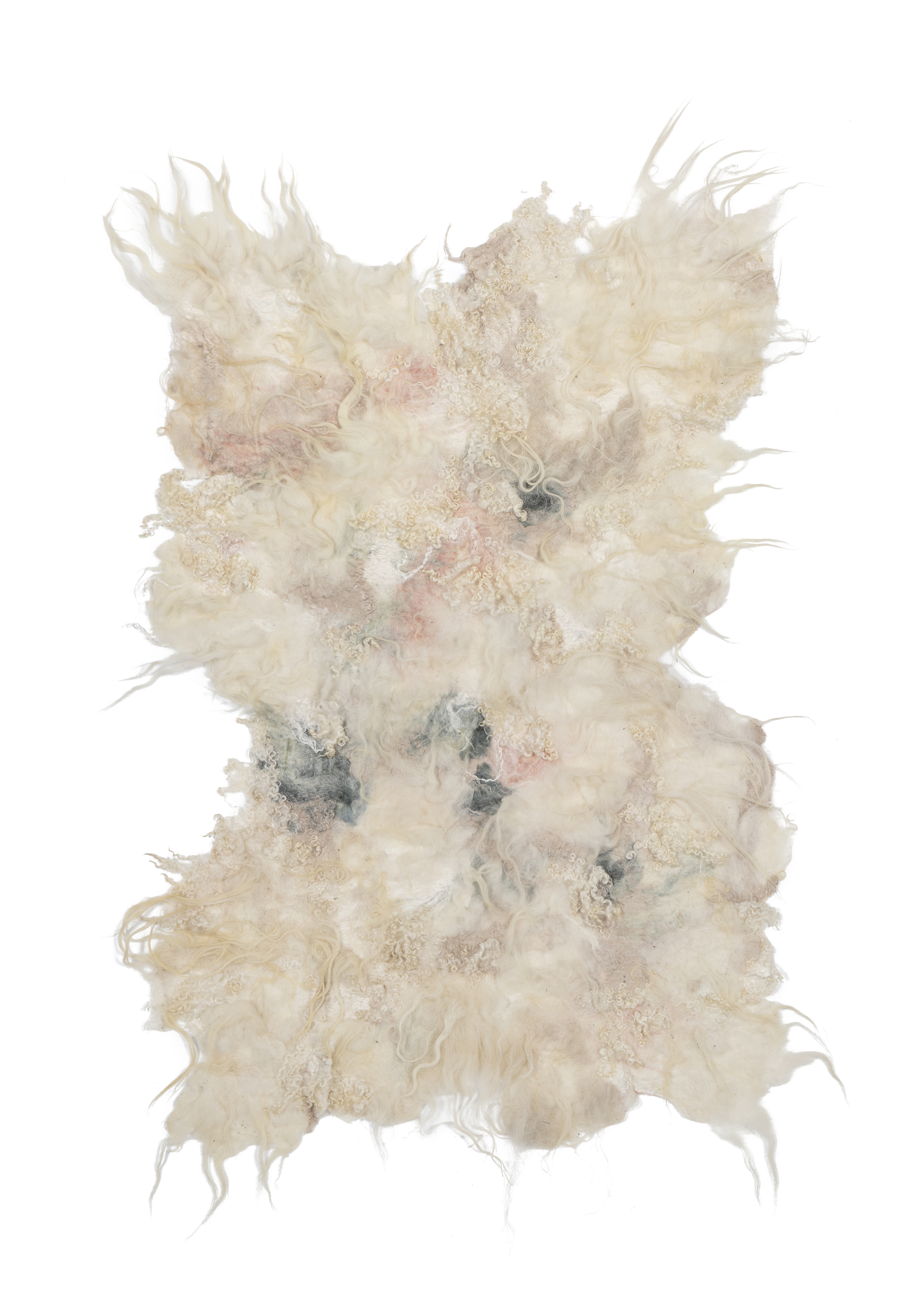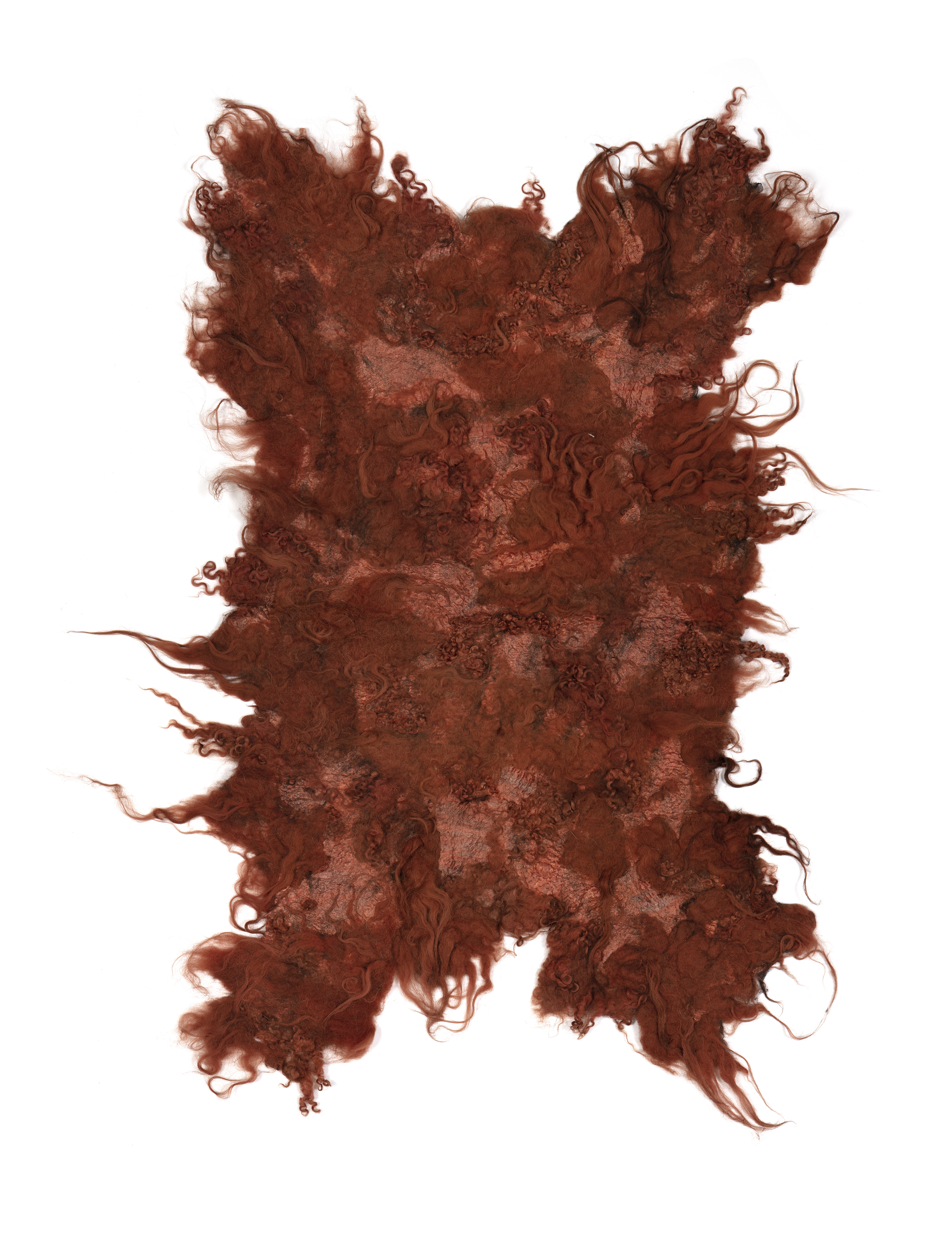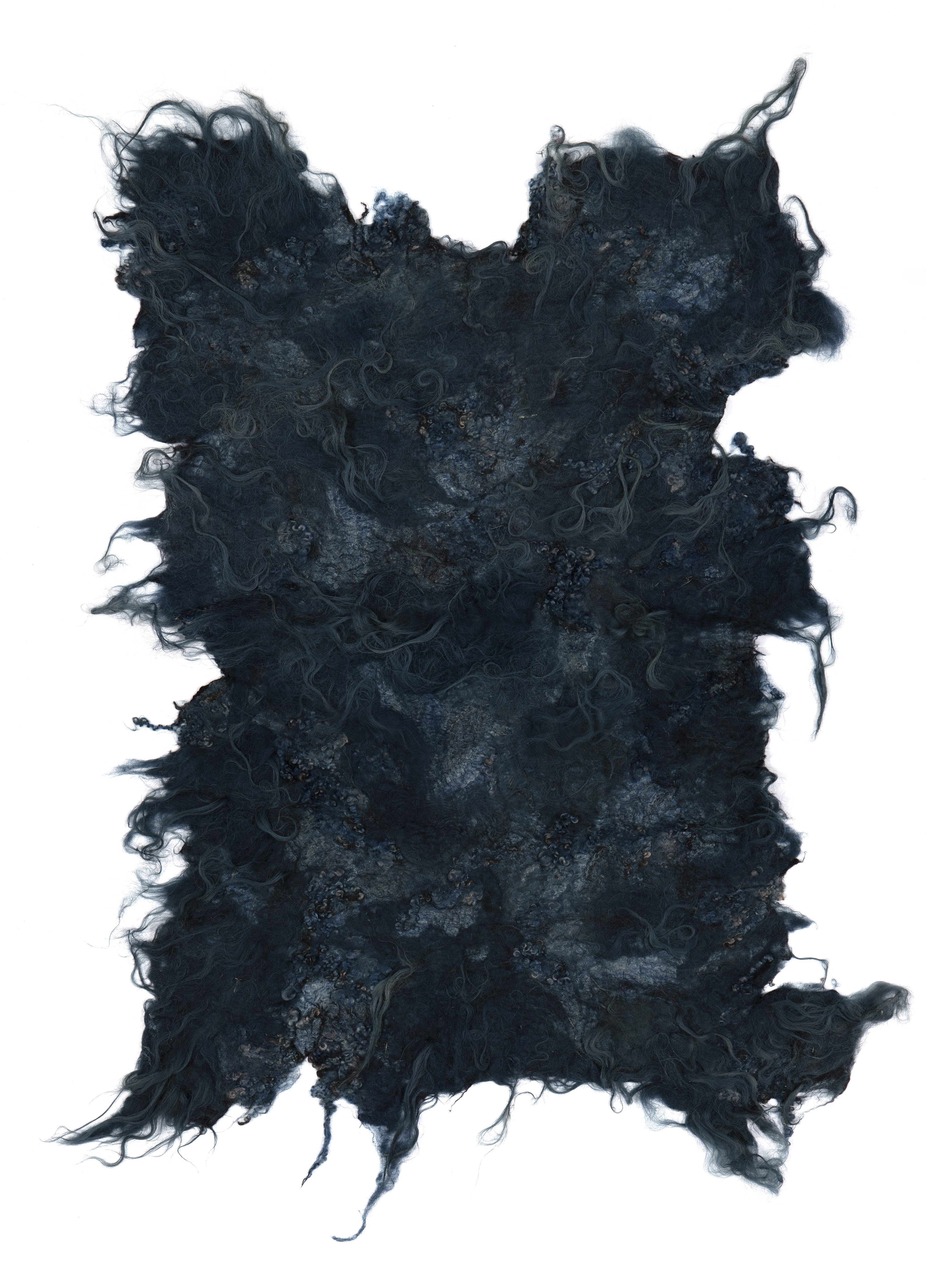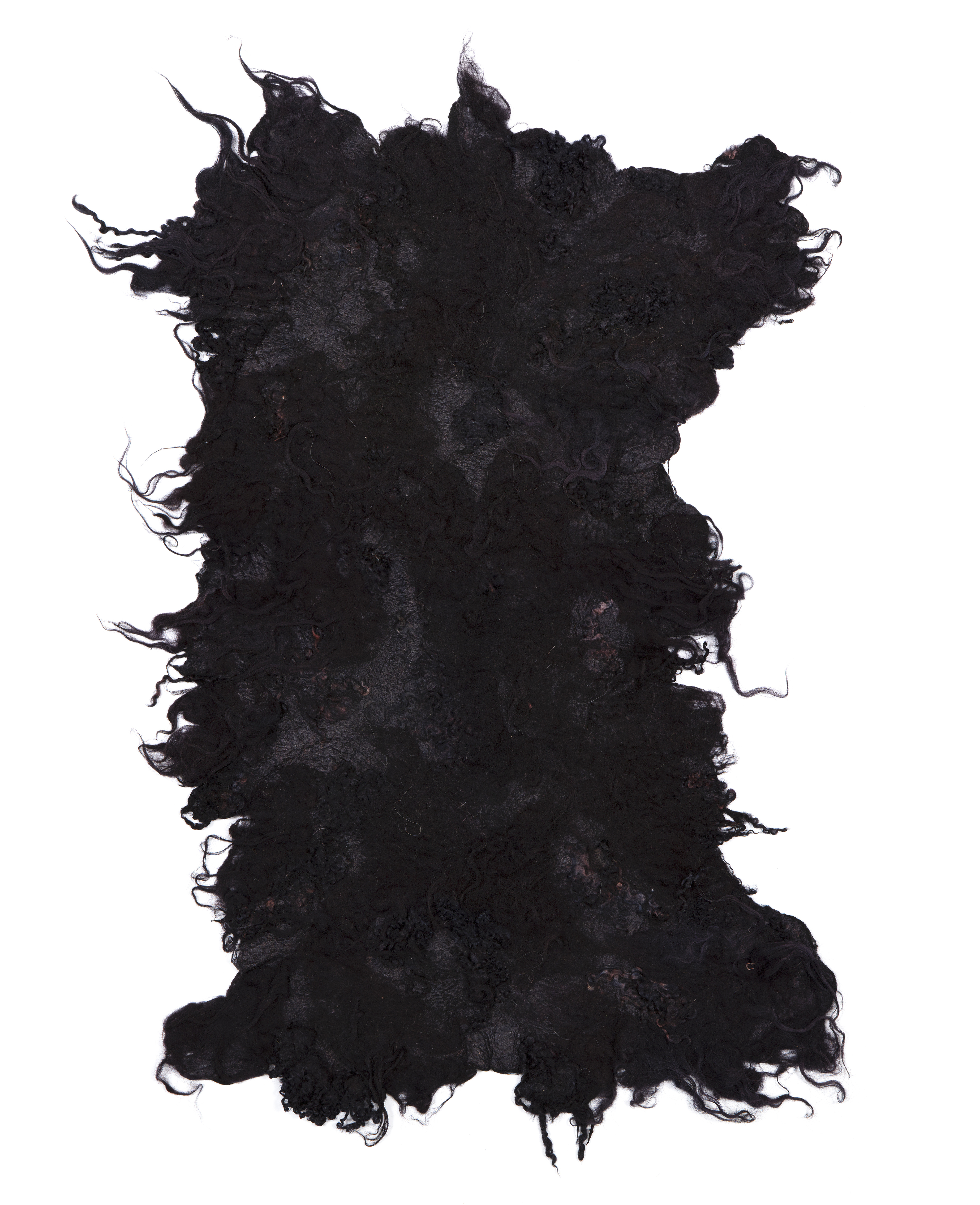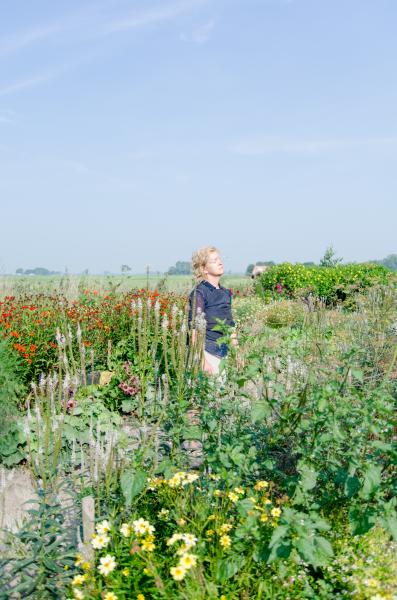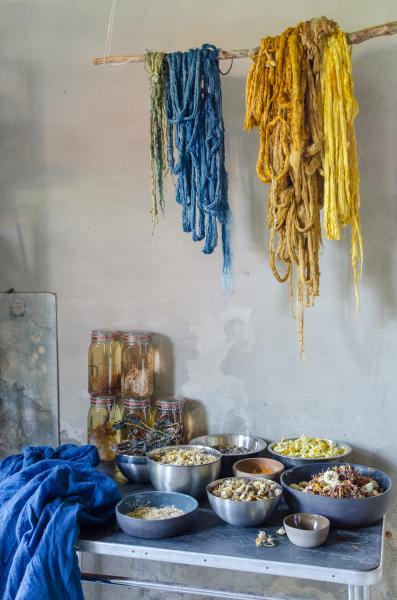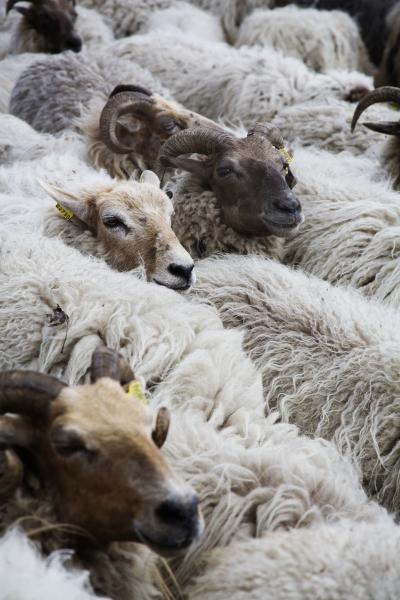Maharam is proud to reintroduce Drenthe Heath by Claudy Jongstra. The product of a completely sustainable chain of creation, Drenthe Heath was first presented in 2005 and is now available in several new colors.
A Dutch textile artist based in Spannum, the Netherlands, Claudy Jongstra is continually inspired by natural beauty, raw materials, and the exploration of ancient crafts. With sustainability, self-sufficiency, and collaboration at the center of her work, Jongstra creates felted materials from raw and woven natural fibers. Having established her own studio shortly after graduating from Utrecht College of Art’s fashion design program, Jongstra began making felt in 1994 and mastered the ancient technique of creating nonwoven fabrics through a combination of water and friction over the subsequent four years. Since then, she has become equally well known for her monumental artworks and architectural installations as for her holistic commitment to conservation, biodiversity, and sustainability. Importantly, Jongstra is fully involved in all aspects of her work, maintaining a flock of indigenous Drenthe Heath sheep, raising bees, growing botanical dyestuffs, and operating a small-scale biodynamic farm and bakery in the northern Netherlands.
In contrast to the homogenous surface of most felts, Jongstra’s felts explode with raw, organic texture. While not only encapsulating environmental ethics, Drenthe Heath is a modern manifestation of material culture passed down through the ages. (Wool felt is the oldest textile known to humankind.) Available in two sizes—the smaller “pelt” and larger “hide”—Drenthe Heath combines alternately lank and coiled tufts of Drenthe Heath, Merino, and Wensleydale wool as well as natural mulberry silk and woven silk chiffon. With its irregular edges and variable surface, Drenthe Heath adds warmth and tactility to any environment.
Since Drenthe Heath’s original release in 2005, Studio Claudy Jongstra has made significant advances in dyeing. Whereas the first edition was piece dyed, with dyeing occurring after felting, the new edition is fiber dyed, meaning that the raw fibers are dyed before they’re even carded. As different fibers absorb dye differently, this improved process affords the studio more control over both color and composition. The new colors of this rerelease utilize locally harvested biodynamic dyestuffs, (from Studio Claudy Jongstra’s dye garden and farm), that are markedly more nuanced. The palette also incorporates a special-edition biodiversity color in which pink and bottle-green tints are dispersed across a predominantly cream background.
Drenthe Heath sheep are integral to Jongstra’s practice—not only as relates to the felt, but also because they contribute towards the ecological preservation of the Dutch moorlands. The survival of the heathlands depends on traditional land management practices, such as grazing. But the disappearance of these practices in combination with increased pollution has accelerated the natural transformation of heathland into woodland. Without management, loss of the heathland would quickly put a range of biotopes and ecosystems at risk.
Europe’s oldest breed of sheep, Drenthe Heath are raised primarily for vegetation management rather than wool or meat production. After chemical fertilizers were introduced to their native heathlands, Drenthe Heath faced obsolescence and the threat of extinction. Conservation efforts began in 1948 with the discovery of a herd in the Dutch village of Ruinen. Today, there are over 1200 Drenthe Heath sheep in the world. Jongstra’s flock, under the careful orchestration of an expert shepherd, maintains vegetative biodiversity, thus supporting habitat diversity and the many associated species of flora and fauna that go along with it. The sheep also disperse the heath seeds while grazing, sowing the future landscape as they roam.
Jongstra’s approach to sourcing her dyes is similarly immersive and transparent. To facilitate direct contact between the dyers and the plants, Jongstra established a biodynamic dye garden adjacent to the dye workshop in 2008. Two years later, noting that many farms in the region operated on a monoculture-based economic model—with potato, grass, and grain dominating the landscape—she launched Northern Colors, an initiative to promote biodiversity across the northern Netherlands. By creating an economic incentive, Studio Claudy Jongstra has enabled eight local farmers to dedicate a portion of their land to traditional natural dye plants like woad (European indigo), madder, and chamomile. This initiative is encapsulated in the special biodiversity edition of Drenthe Heath, and is also the impetus for Maharam’s relaunch.
Two additional agricultural and social initiatives further extend Jongstra’s impact. In 2014, Jongstra and her partner, Claudia Busson, acquired an abandoned plot of farmland, De Kreake (The Creek), and broke ground with horse-drawn plows soon afterwards. The first crop planted was rye, a natural fertilizer, which in turn inspired the conversion of an old barn into a brick-oven bakery. They have since transformed De Kreake into an experimental biodynamic farm which proposes a new model for sustainability in the Dutch countryside. The farm hosts agricultural and social initiatives including Farm of the World, which provides educational workshops for underprivileged youth, emphasizing the utilization of local resources and the revitalization of traditional skills while catalyzing collaborative projects on a local and international level. Similarly, Jongstra invites students and collaborators from around the world into her studio to learn carding, dyeing, spinning, weaving, felting, and embroidery, thereby perpetuating these ancient crafts.
Many of these activities coalesce in the 2017 monograph Claudy Jongstra, designed by Irma Boom and published by nai010. Rather than use standard CMYK inks, Claudy Jongstra is printed with specially developed inks based on the natural colors of indigo, chamomile, madder, and dark indigo. Likewise, uncut, folded pages reflect the essentially honest quality that characterizes Jongstra’s work.
In tandem with the reintroduction of Drenthe Heath, Maharam was proud to support WOVEN SKIN, a modular installation of sixty textiles that explores themes of ecology, color, and community. Having previously traveled to Leeuwarden-Friesland, the 2018 European Capital of Culture, and Palermo, where it was shown as part of Manifesta 12, WOVEN SKIN arrived stateside for Climate Week NYC (September 24–30, 2018). Concurrent with the United Nations General Assembly, Climate Week NYC is a global climate action summit that works to support the implementation of the Paris Agreement and the achievement of the UN Sustainable Development Goals. WOVEN SKIN was exhibited both in New York City at A/D/O and upstate at the Stone Barns Center for Food and Agriculture, a nonprofit farm and education center affiliated with chef Dan Barber’s restaurant, Blue Hill. To mark the occasion, WOVEN SKIN TALKS convened a panel at A/D/O on September 24 moderated by LinYee Yuan of MOLD, involving Jongstra along with architects Matthew Baird, Billie Tsien, and Tod Williams; Karenna Gore of the Center for Earth Ethics; and CJ Sapong of Sacred Seeds.
About Claudy Jongstra
Claudy Jongstra (b. 1963, the Netherlands) is a Dutch textile artist whose holistic practice is intertwined with the natural cycle of her native landscape and whose artworks and architectural installations embody environmental advocacy, carefully considering the evolution of color and material from source to site. Jongstra’s work is included in the permanent collections of the Cooper Hewitt, Smithsonian Design Museum; the Los Angeles County Museum of Art; the Museum of Modern Art; the RISD Museum; the Stedelijk Museum; and the Victoria & Albert Museum, among others. Recent large-scale installations include Fields of Transformation for the Moelis Family Grand Reading Room at the University of Pennsylvania and Metamorphosis of the Butterfly for the US Embassy in The Hague. A major new work, WOVEN SKIN, is currently touring internationally through 2019.
Drenthe Heath
Introduction: October 2018
Content: 35% Drenthe Heath Wool,
25% Mulberry Silk, 20% Merino Wool,
20% Wensleydale Wool
Colors: 4
